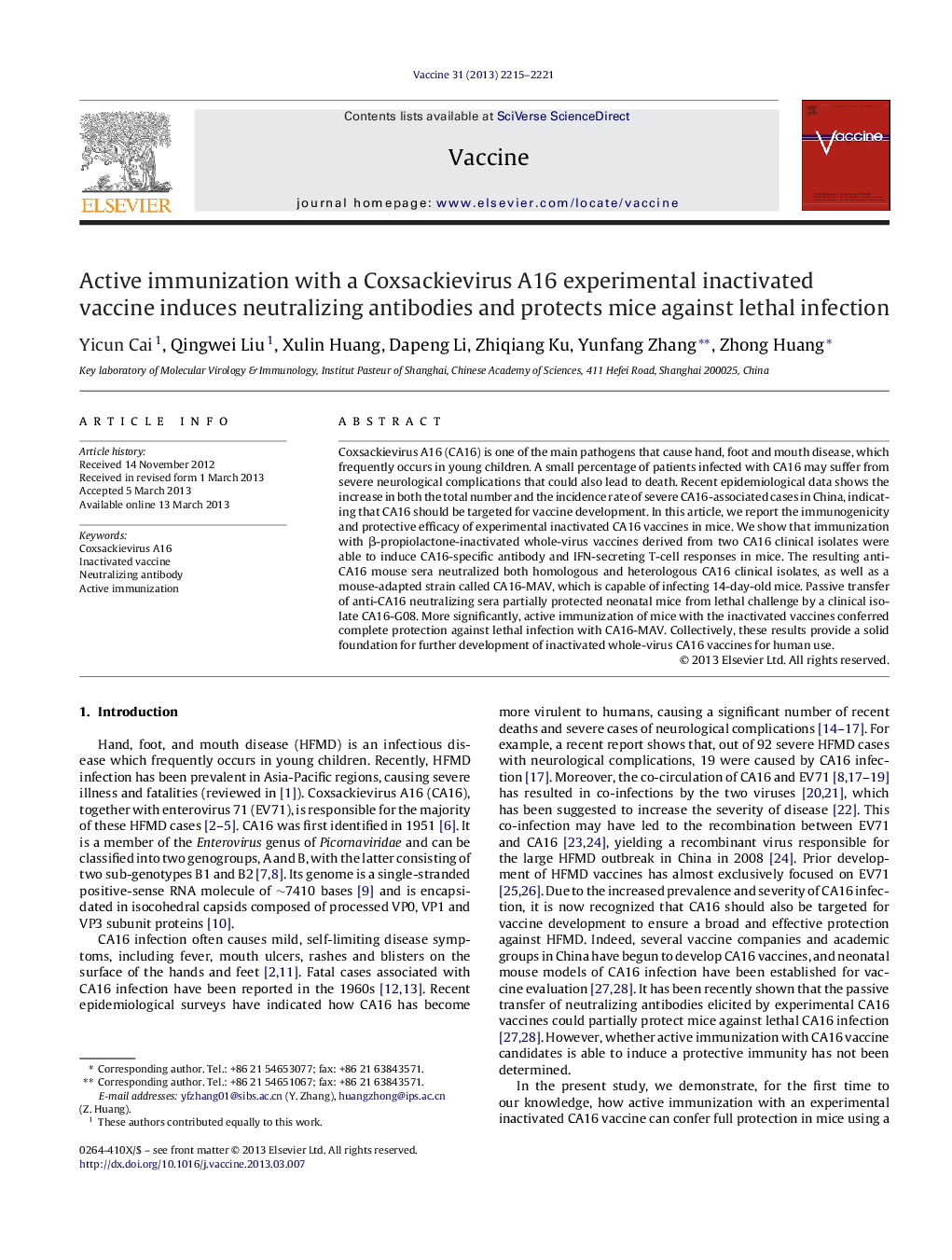| Article ID | Journal | Published Year | Pages | File Type |
|---|---|---|---|---|
| 10967470 | Vaccine | 2013 | 7 Pages |
Abstract
Coxsackievirus A16 (CA16) is one of the main pathogens that cause hand, foot and mouth disease, which frequently occurs in young children. A small percentage of patients infected with CA16 may suffer from severe neurological complications that could also lead to death. Recent epidemiological data shows the increase in both the total number and the incidence rate of severe CA16-associated cases in China, indicating that CA16 should be targeted for vaccine development. In this article, we report the immunogenicity and protective efficacy of experimental inactivated CA16 vaccines in mice. We show that immunization with β-propiolactone-inactivated whole-virus vaccines derived from two CA16 clinical isolates were able to induce CA16-specific antibody and IFN-secreting T-cell responses in mice. The resulting anti-CA16 mouse sera neutralized both homologous and heterologous CA16 clinical isolates, as well as a mouse-adapted strain called CA16-MAV, which is capable of infecting 14-day-old mice. Passive transfer of anti-CA16 neutralizing sera partially protected neonatal mice from lethal challenge by a clinical isolate CA16-G08. More significantly, active immunization of mice with the inactivated vaccines conferred complete protection against lethal infection with CA16-MAV. Collectively, these results provide a solid foundation for further development of inactivated whole-virus CA16 vaccines for human use.
Related Topics
Life Sciences
Immunology and Microbiology
Immunology
Authors
Yicun Cai, Qingwei Liu, Xulin Huang, Dapeng Li, Zhiqiang Ku, Yunfang Zhang, Zhong Huang,
